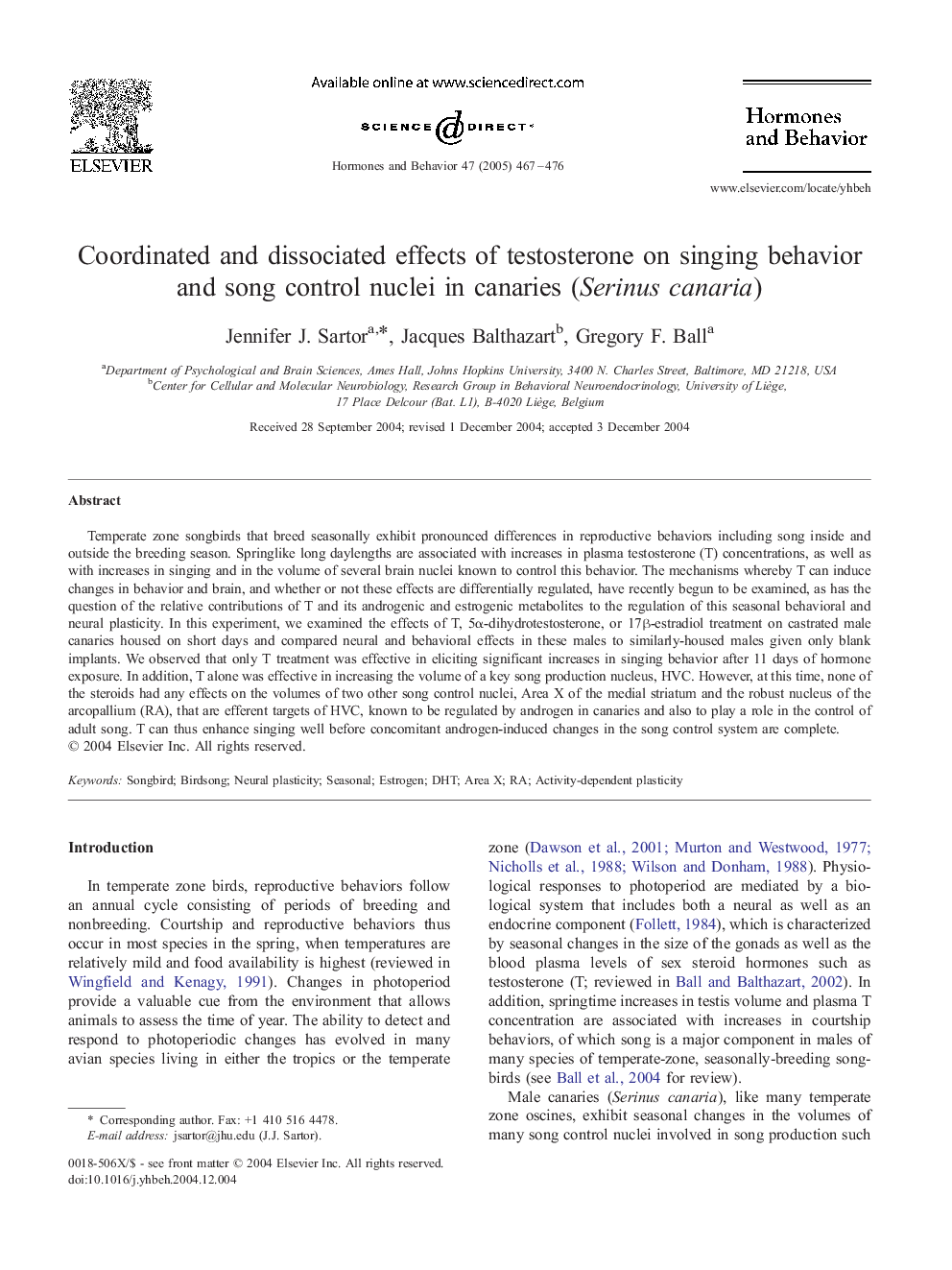| Article ID | Journal | Published Year | Pages | File Type |
|---|---|---|---|---|
| 10301188 | Hormones and Behavior | 2005 | 10 Pages |
Abstract
Temperate zone songbirds that breed seasonally exhibit pronounced differences in reproductive behaviors including song inside and outside the breeding season. Springlike long daylengths are associated with increases in plasma testosterone (T) concentrations, as well as with increases in singing and in the volume of several brain nuclei known to control this behavior. The mechanisms whereby T can induce changes in behavior and brain, and whether or not these effects are differentially regulated, have recently begun to be examined, as has the question of the relative contributions of T and its androgenic and estrogenic metabolites to the regulation of this seasonal behavioral and neural plasticity. In this experiment, we examined the effects of T, 5α-dihydrotestosterone, or 17β-estradiol treatment on castrated male canaries housed on short days and compared neural and behavioral effects in these males to similarly-housed males given only blank implants. We observed that only T treatment was effective in eliciting significant increases in singing behavior after 11 days of hormone exposure. In addition, T alone was effective in increasing the volume of a key song production nucleus, HVC. However, at this time, none of the steroids had any effects on the volumes of two other song control nuclei, Area X of the medial striatum and the robust nucleus of the arcopallium (RA), that are efferent targets of HVC, known to be regulated by androgen in canaries and also to play a role in the control of adult song. T can thus enhance singing well before concomitant androgen-induced changes in the song control system are complete.
Related Topics
Life Sciences
Biochemistry, Genetics and Molecular Biology
Endocrinology
Authors
Jennifer J. Sartor, Jacques Balthazart, Gregory F. Ball,
